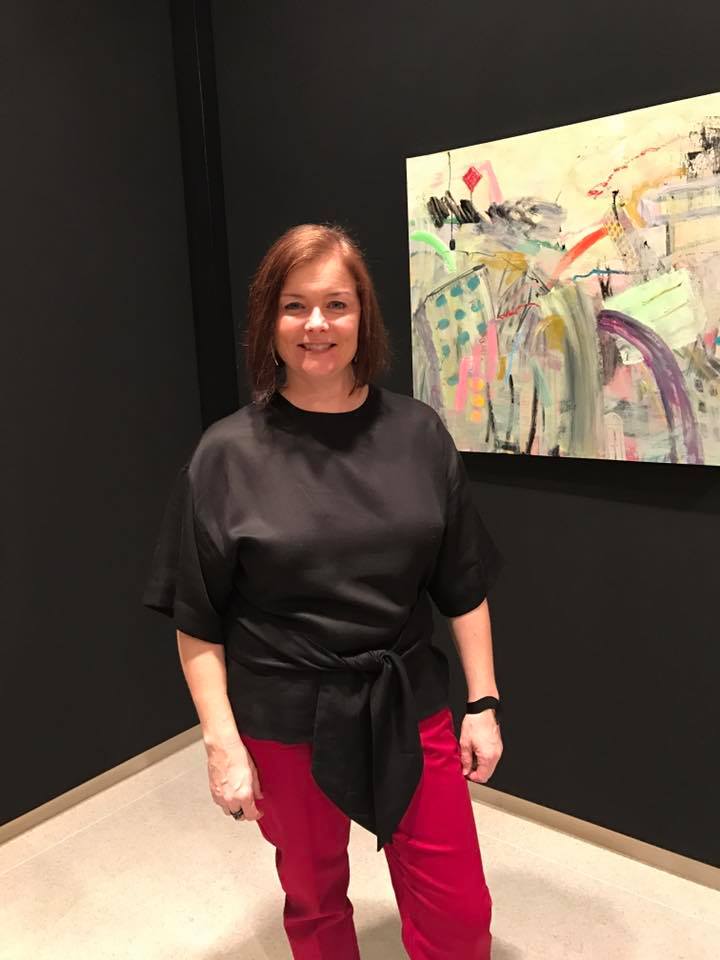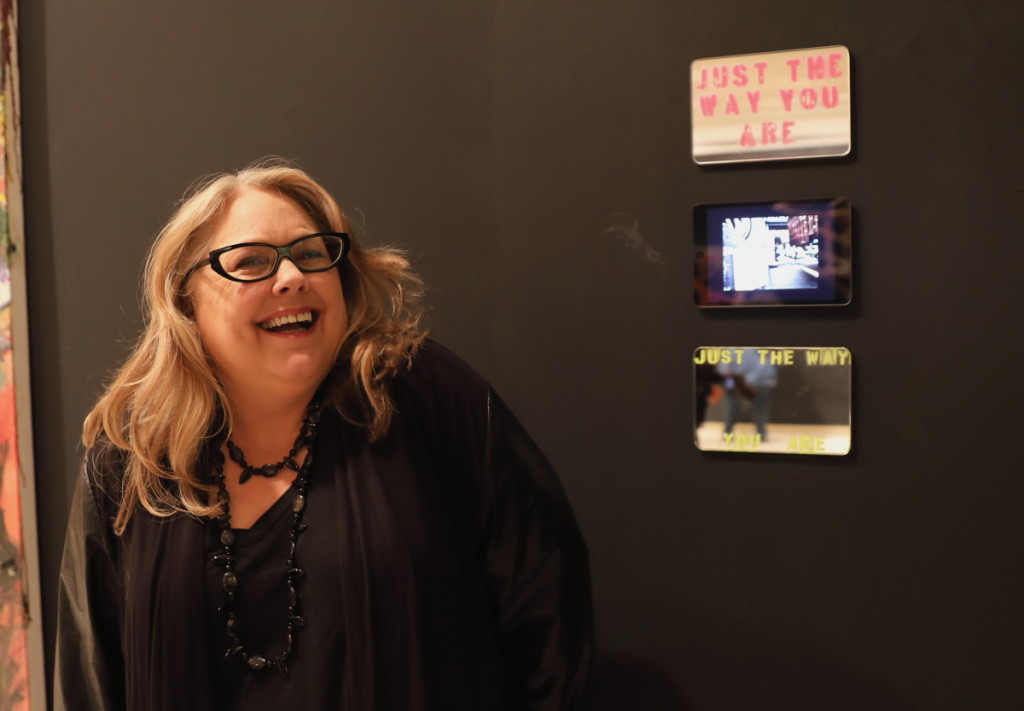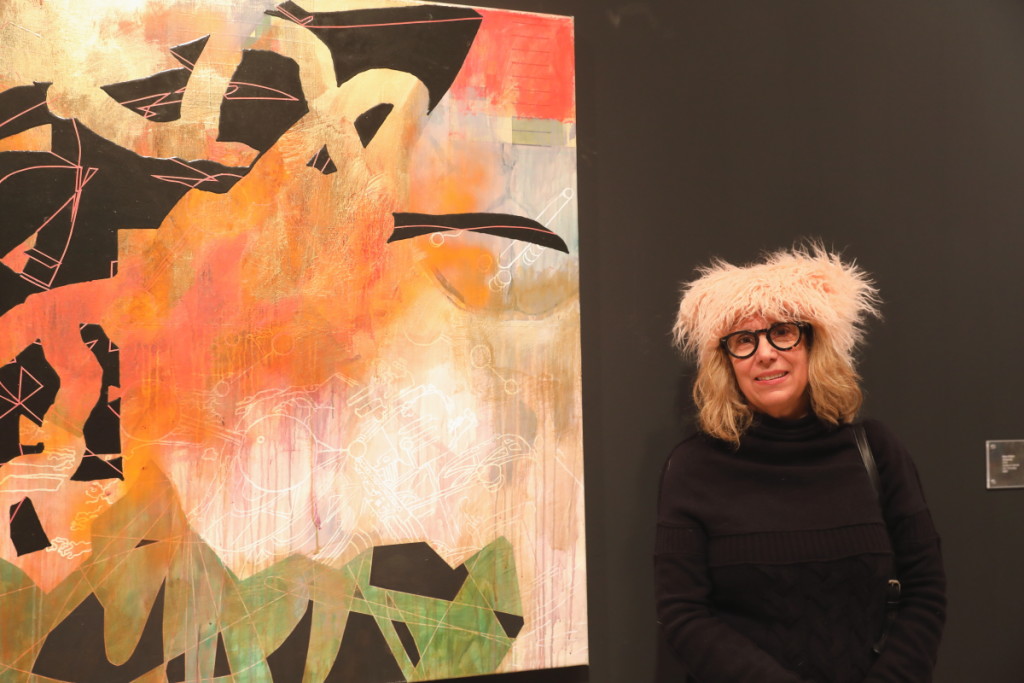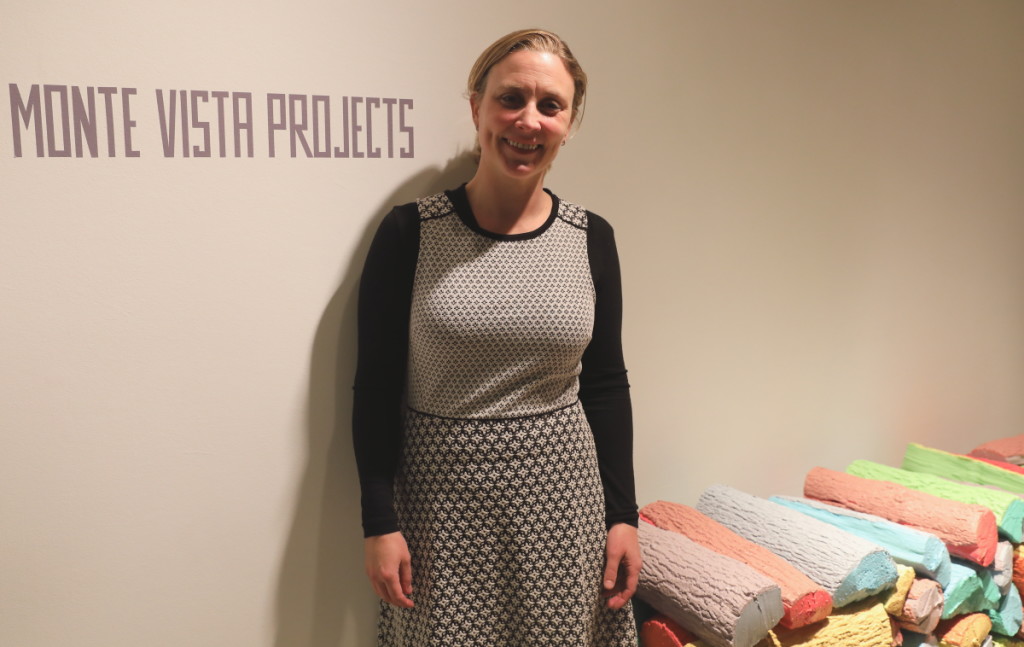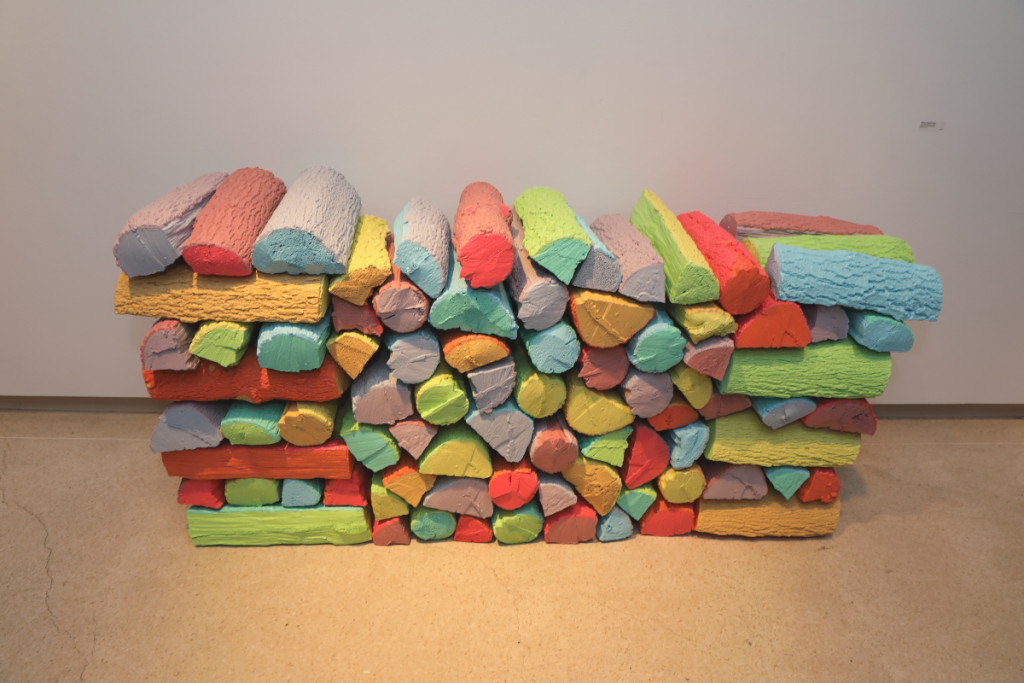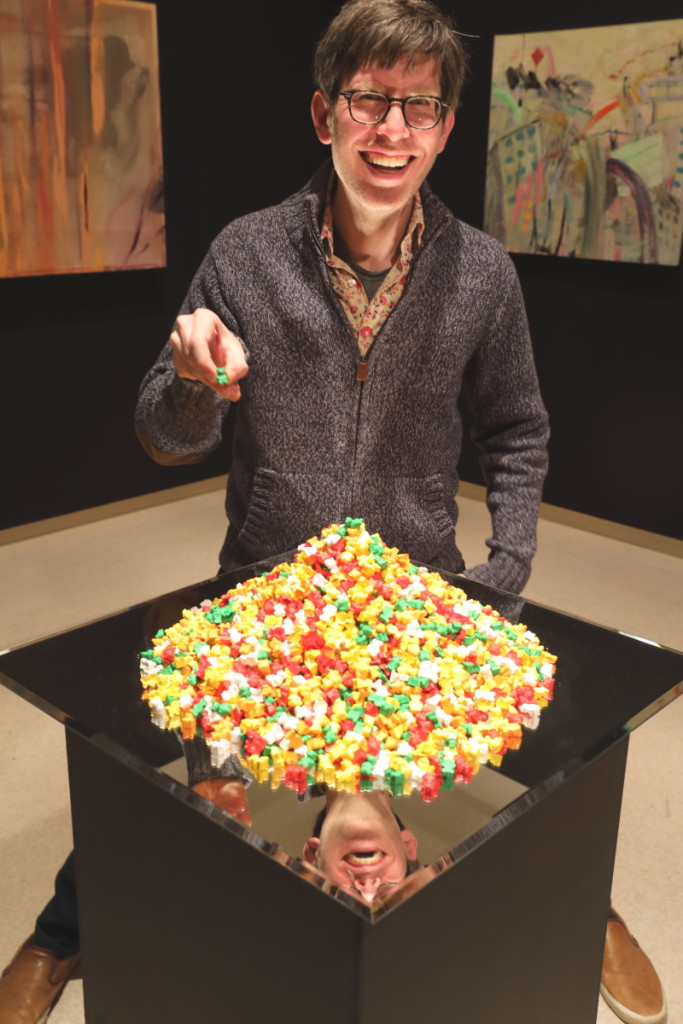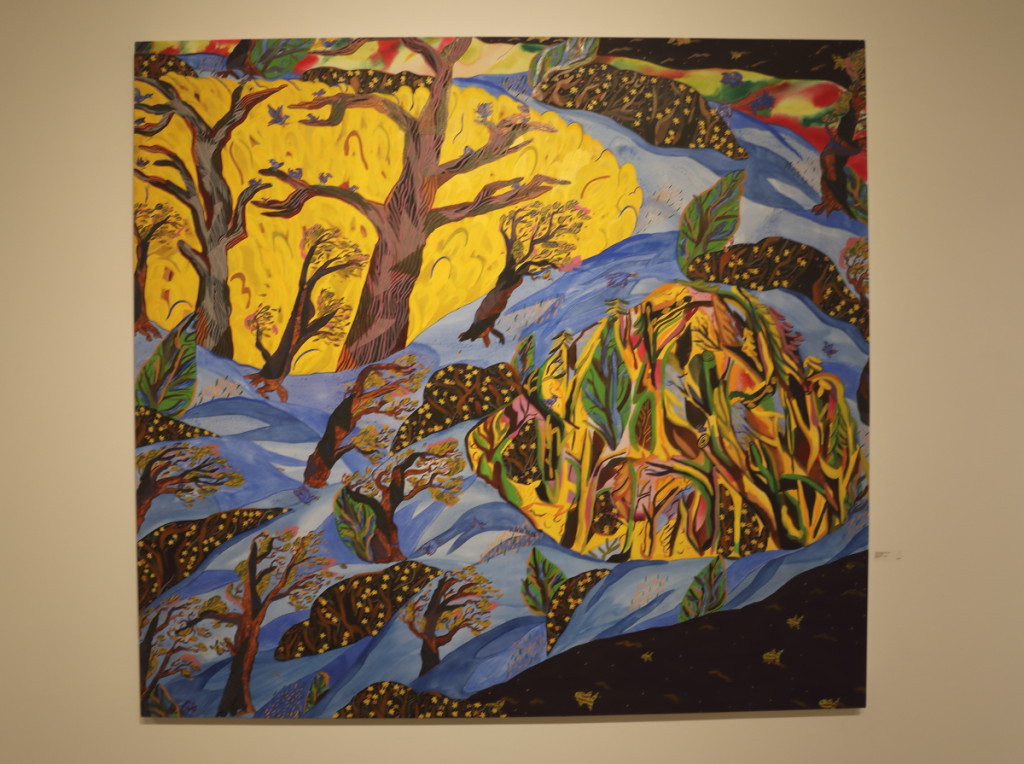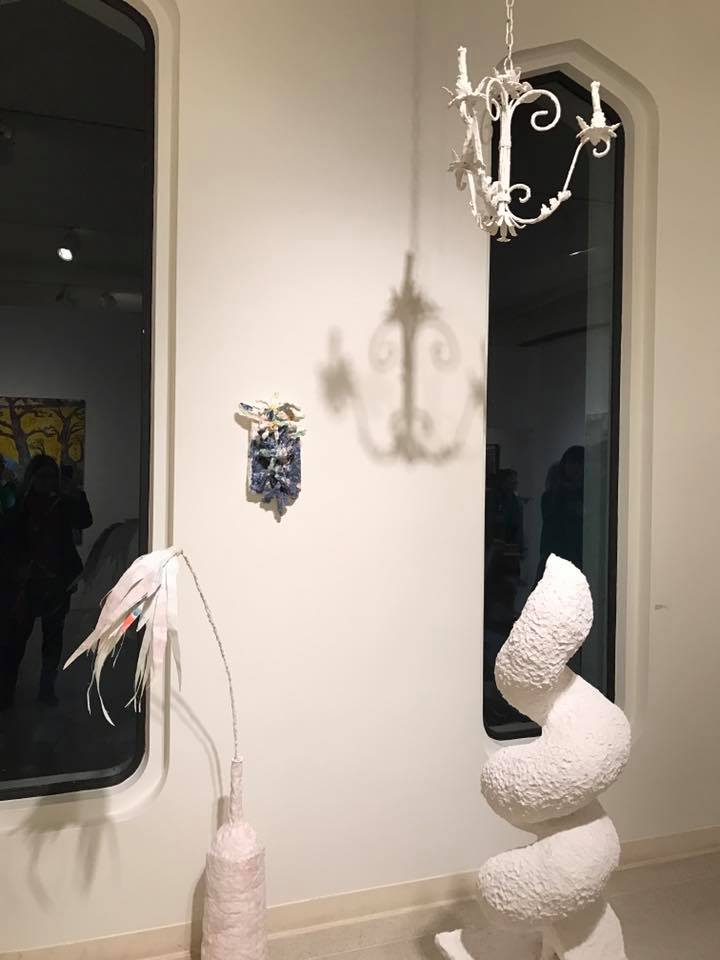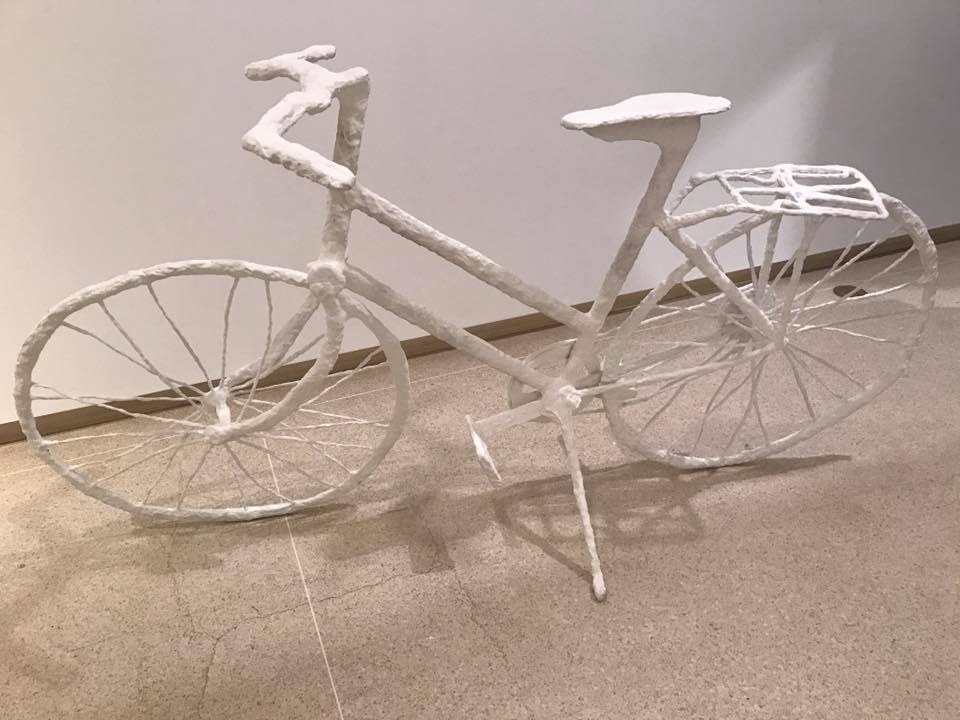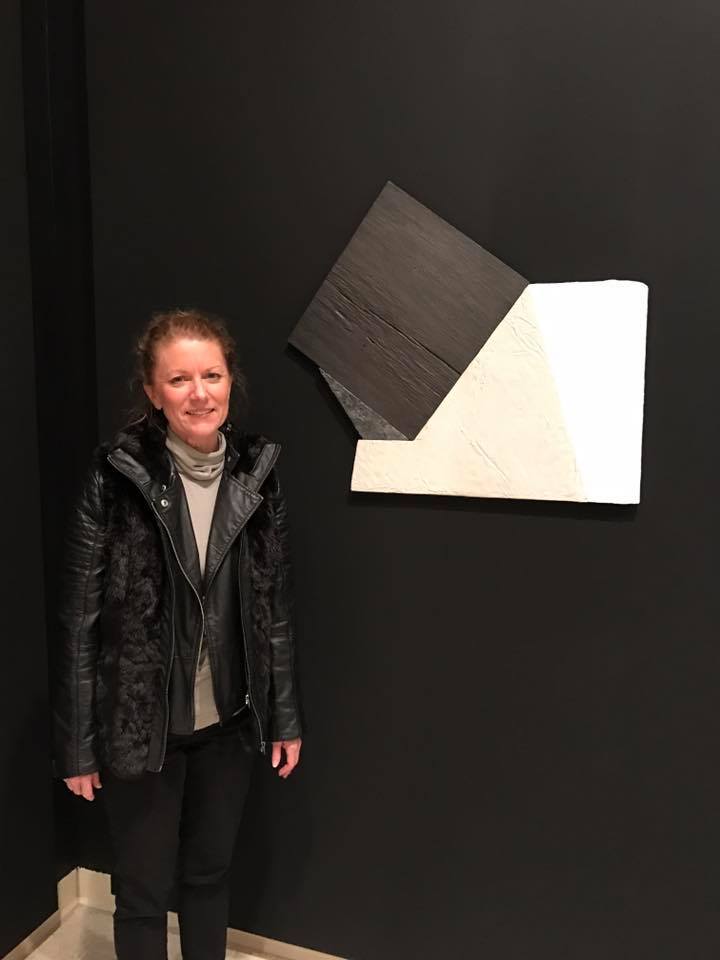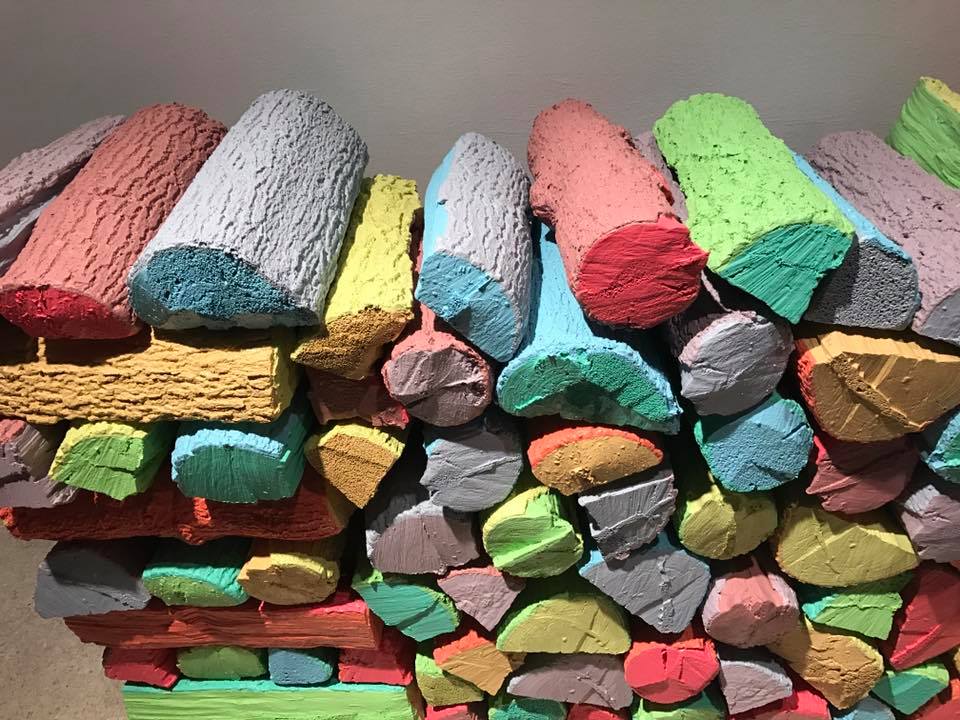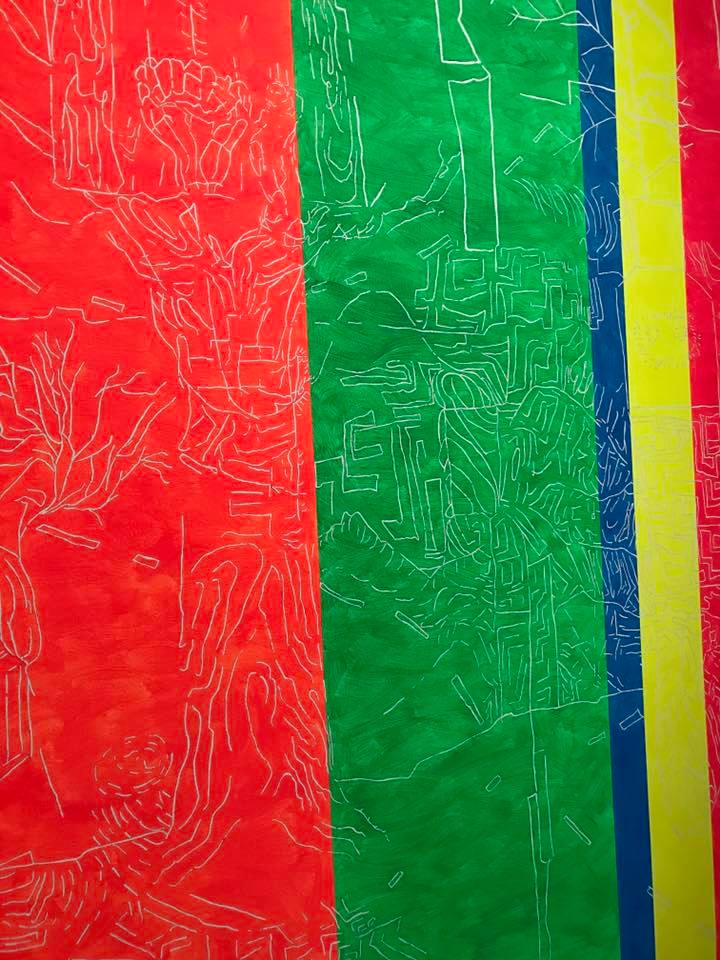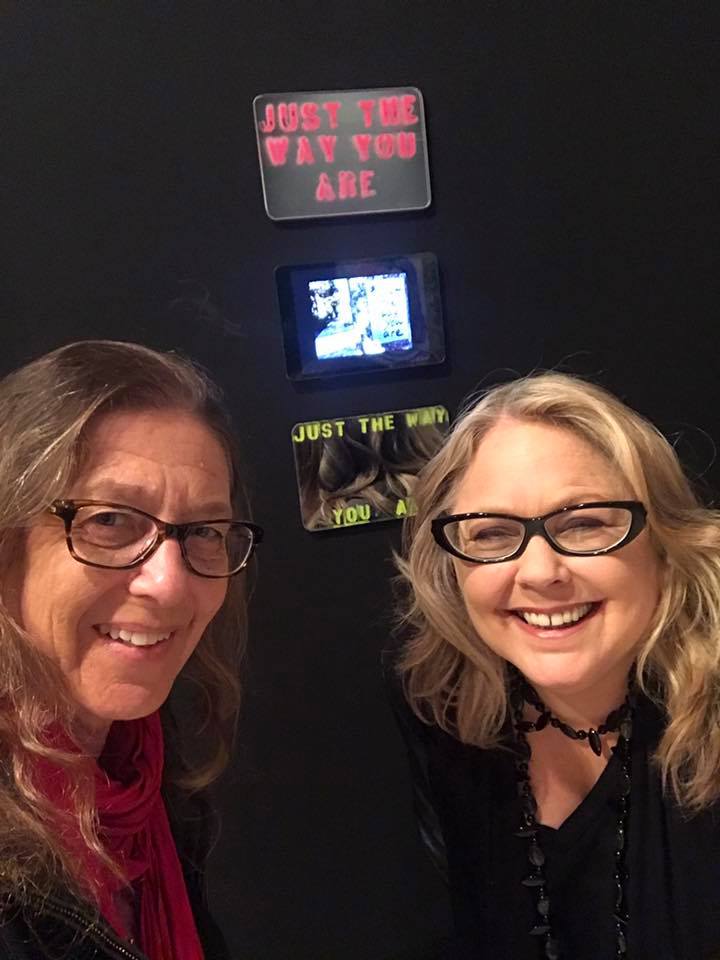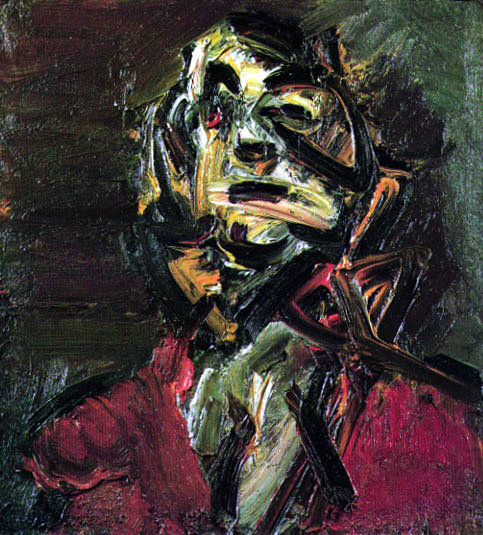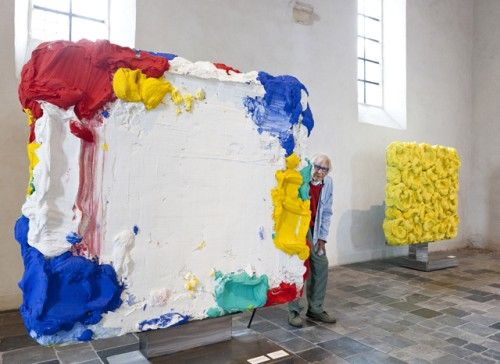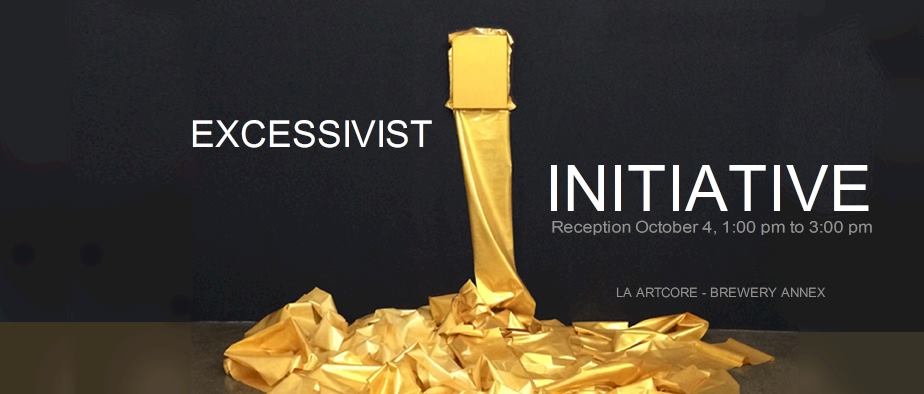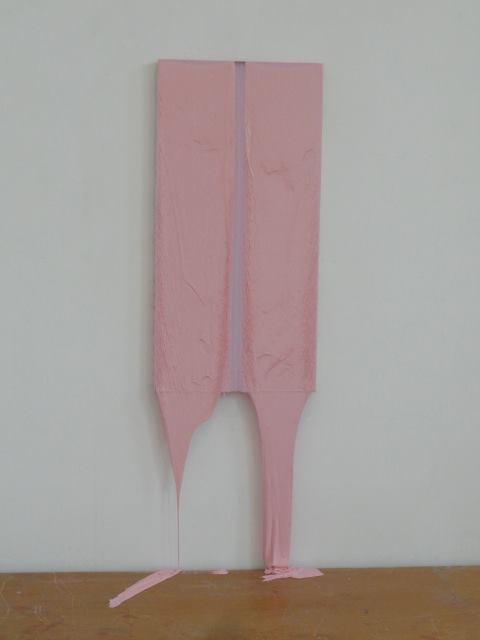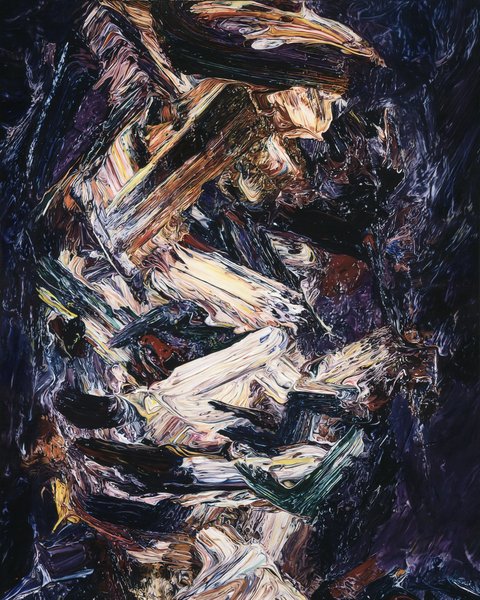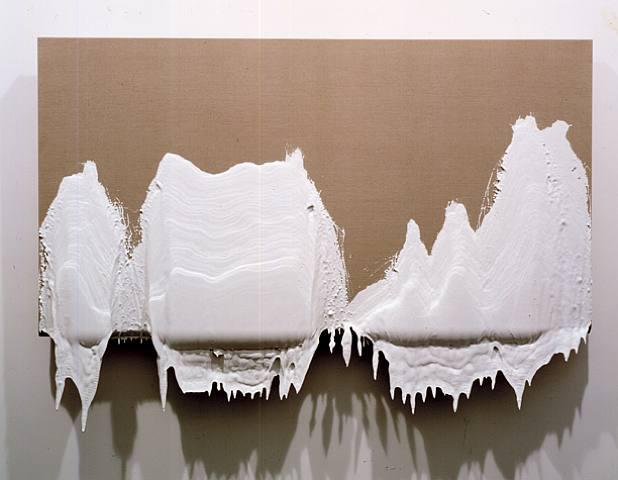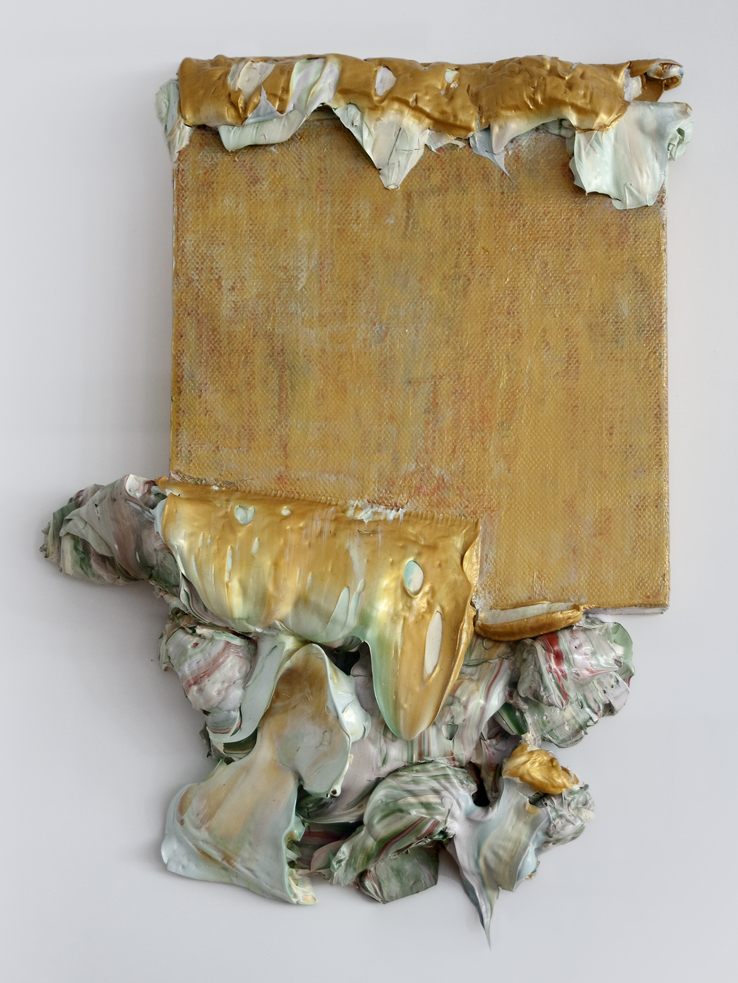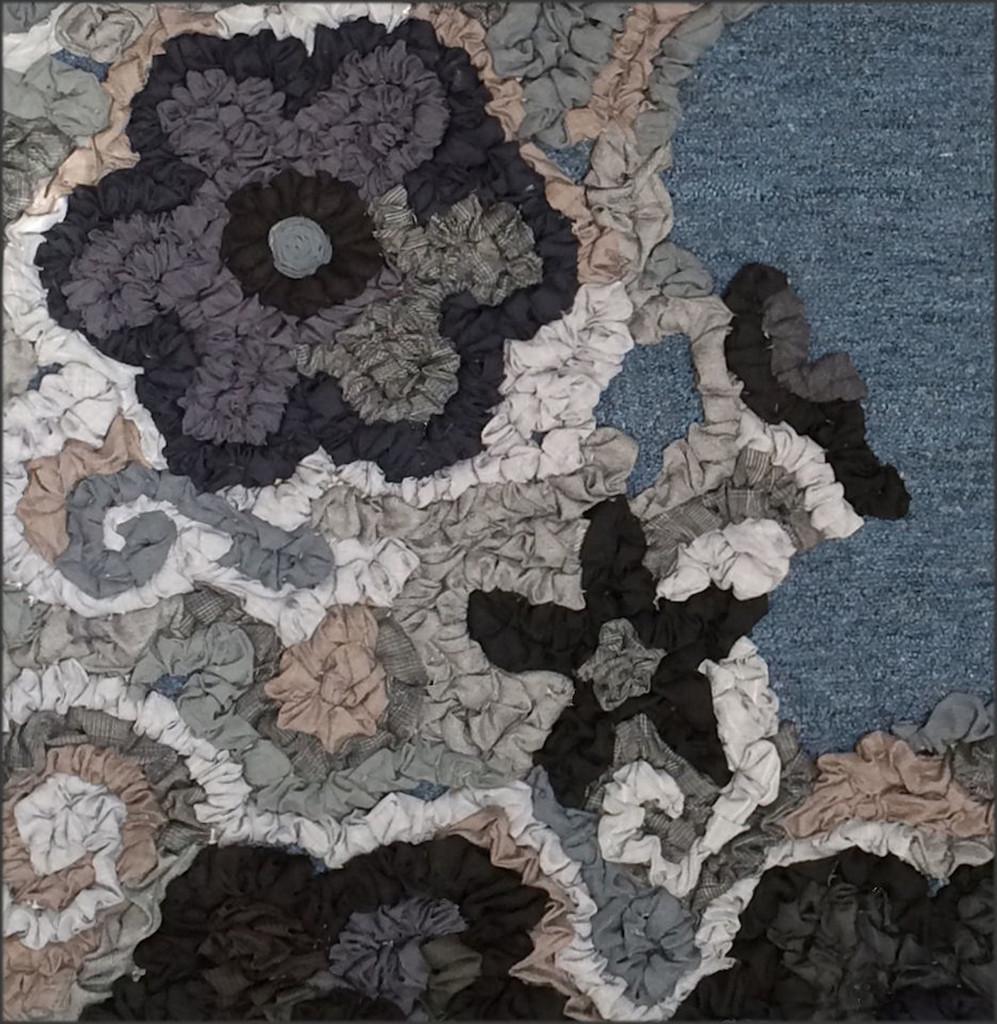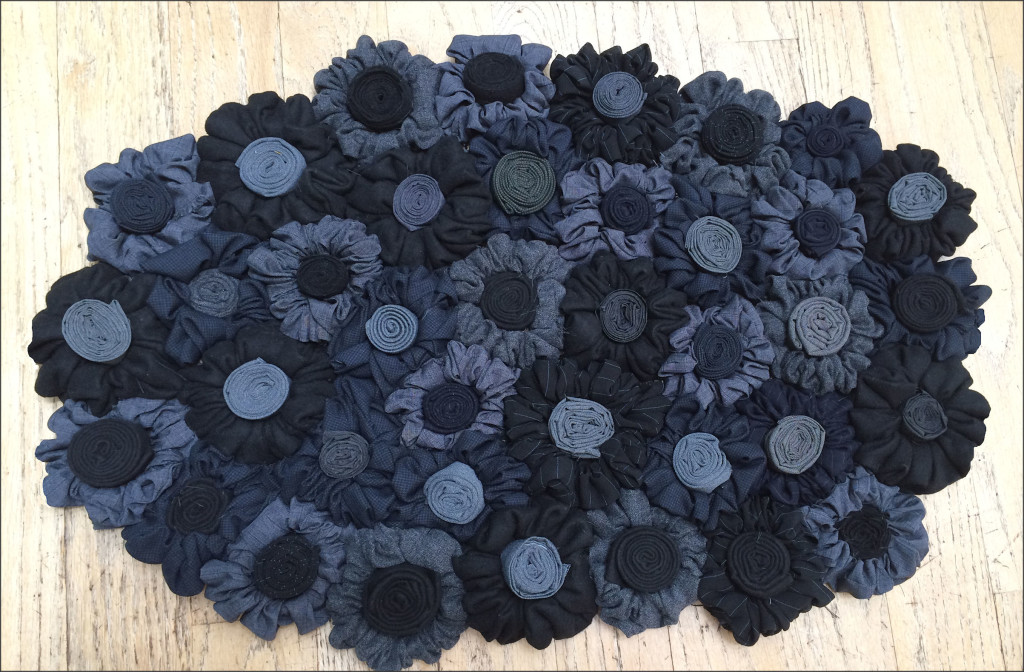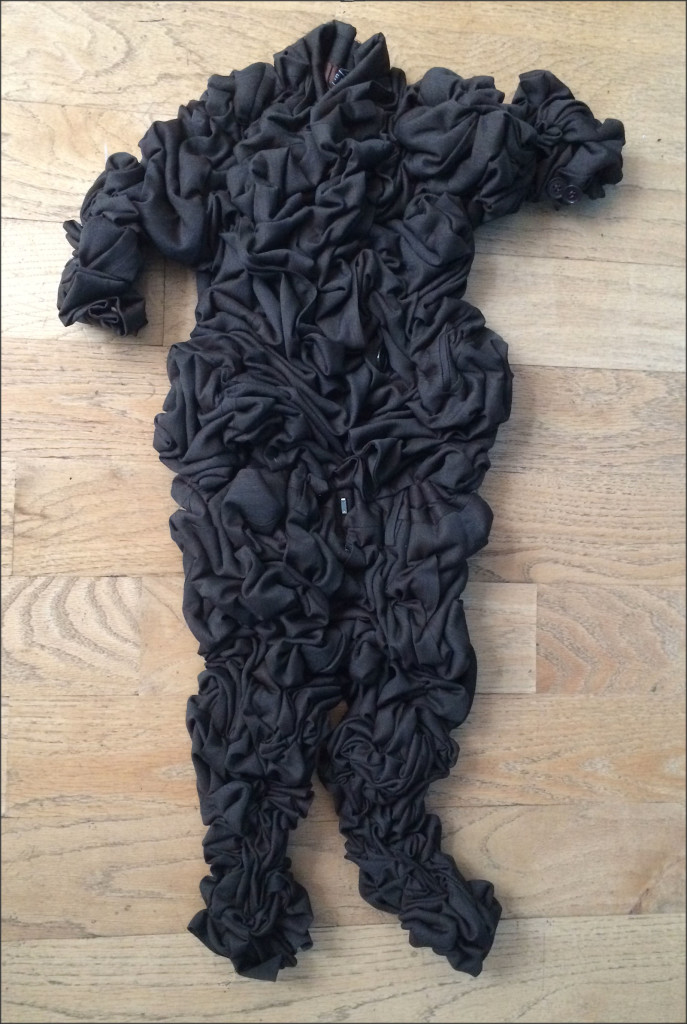Through March 26th at the Porch Gallery in Ojai, Osceola Refetoff continues his “Desert Windows” series with 20 beautifully composed photographs in “It’s a Mess Without You.”
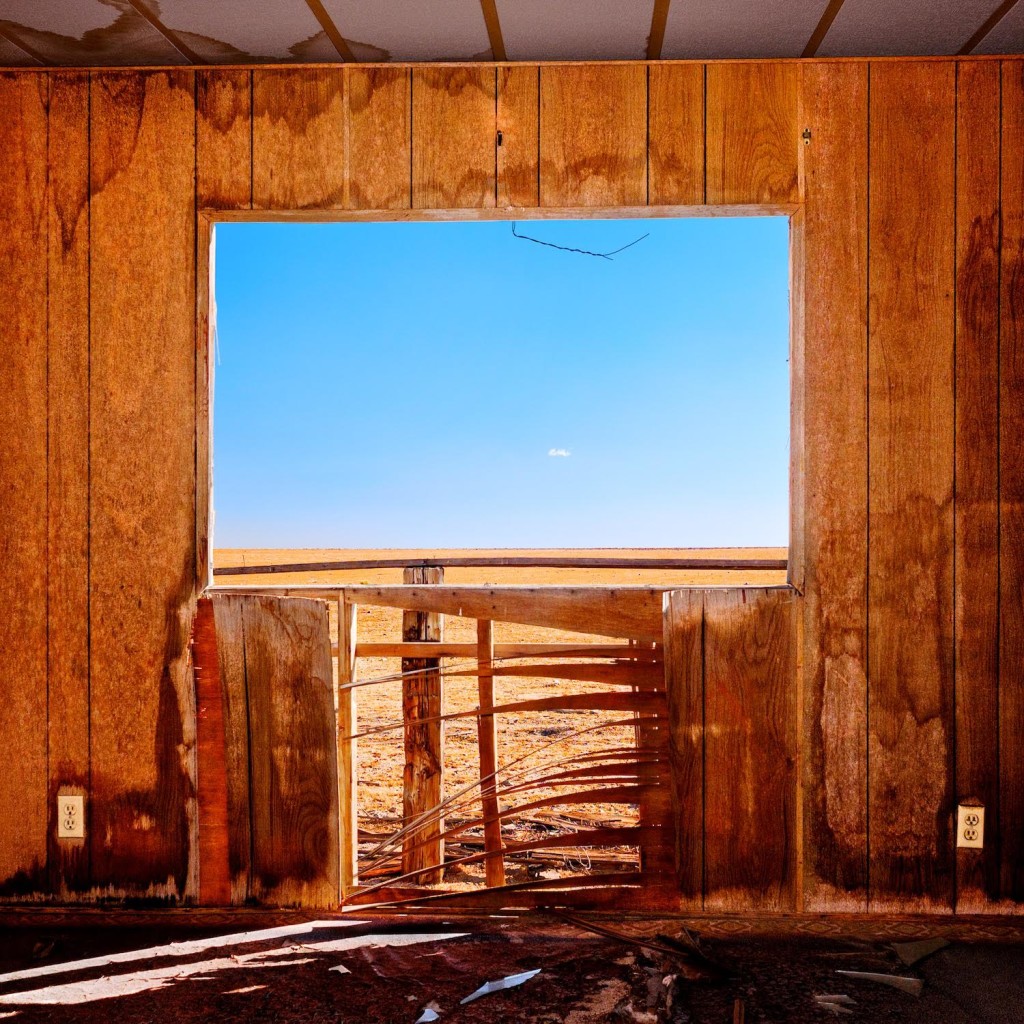
The raw, bright desert is the external landscape Refetoff frames through the windows of decaying desert structures. There’s a visual short story in each piece, evocative of the lives once lived in these now broken-down shacks, and in the beauty and harshness of the desert stretching far beyond the space in which a human once dared intrude.
“Window with Wire & Tiny Cloud – Cinco, CA – 2009,” above, gives us a dazzling blue sky outside the wooden frame of a window, the clear and bright landscape marred only by the small imperfections of a wire caught on the decaying house and a patch of cloud.
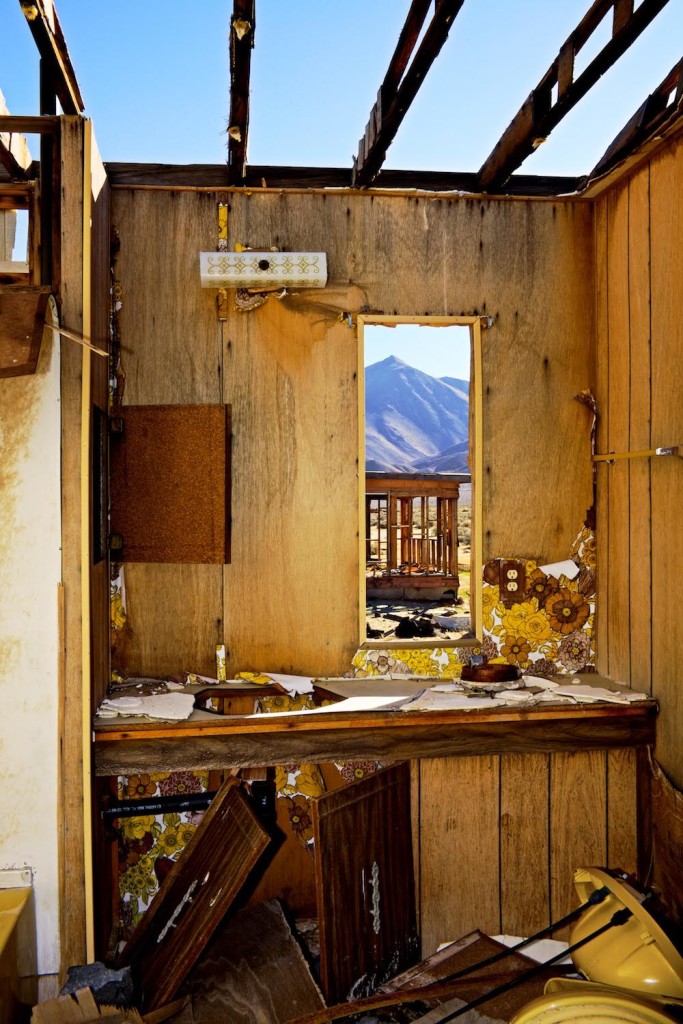
“Trailer Bathroom with Floral Motif & Mountain View – Coso, CA – 2015,” lets us glimpse the cathedral of a blue mountain’s crags through the confines of a narrow bathroom window, a window surrounded by the broken remains of what was once a 70s era nightmare of floral design.
In both cases we are a mute witness to loss, to an unforgiving yet stunning land that seems almost sentient.
“Many of these structures are the former homes of agricultural workers, abandoned when the farms went under,” Refetoff explains. “For three years, I returned repeatedly to a site in Cinco, Calif., just north of the town of Mojave, where several trailer homes faced an almost impossibly flat horizon created when the adjacent alfalfa field was left fallow. Other locations include Trona, a 100-year-old mining town south of Death Valley, and Thermal, CA in the Coachella Valley, both hardscrabble desert communities facing significant economic challenges.”
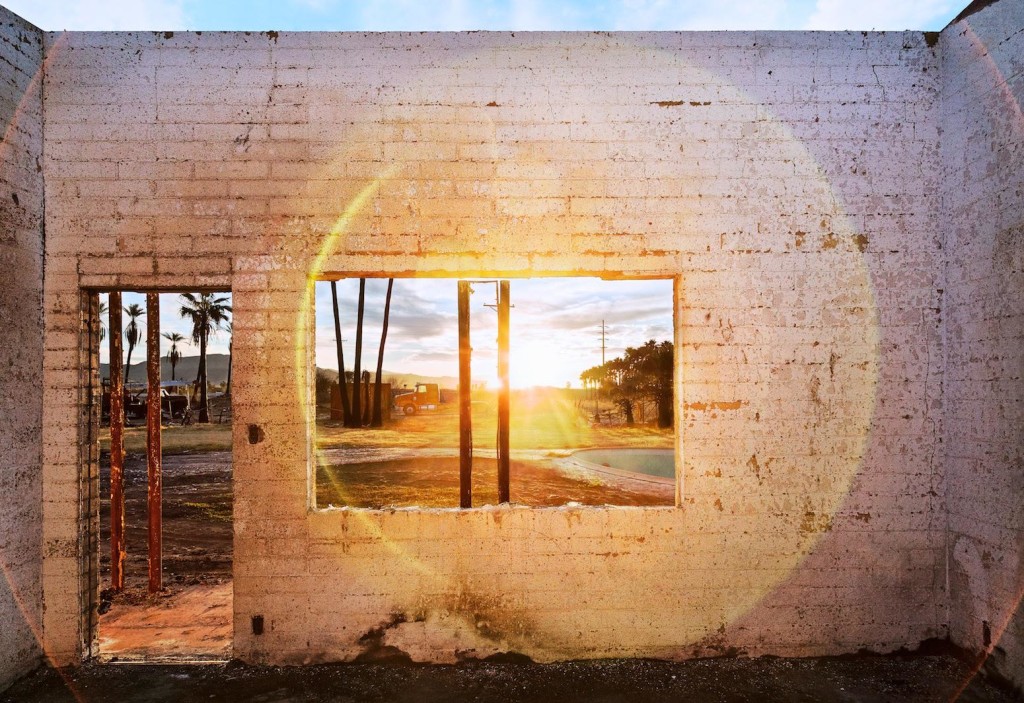
The artist views his work as an exploration of the crossroad between human enterprise and natural environments. The viewer sees that crossroad as a literal and figurative line in the sand, a battle in which nature is the victor, proud and unforgiving of human folly.
“My practice is opportunistic in the sense that I don’t focus on a single project, but travel across significant distances in search of interesting subjects. I’m continuously populating several interrelated portfolios that explore the way people and communities frame their relationships to arid lands. “Desert Windows” is one of these portolfios. The most recent photographs debuting at Porch Galley date from 2015 and 2016, but some of the “new” images were captured as early as 2009,” Refetoff says.
Refetoff’s narrative photographic approach is no accident.
“I came to photography later in life. For many years, I was completely consumed with motion pictures, eventually getting an M.F.A. in film production from NYU. So my compositional style and my interest in visual narrative is heavily influenced by the great mis-en-scene directors – Lange, Welles, Kubrick, and Melville,” he asserts. “As a photographer, I’m interested in carefully framing compositions in depth, I like to explore temporal as well as visual space, and I’m obsessed with creating optical effects in-camera, at the moment of capture.” He adds that despite the documentary nature of much of his work, his visual approach is grounded in narrative filmmaking techniques. “I am still telling stories, but now within single, densely-packed frames, edited together into ever-expanding portfolios.” Film shorts, if you will; cinematic haiku.
In Refetoff’s world, the desert dazzles, it breathes with heat and hidden life, while man’s desire to prevail falters, his dreams fading in the sun.
Every picture indeed tells a story here, in an exhibition that is both haunting and elegaic, vividly expressing and contrasting the impervious eternal with the once hopeful spark of humankind.
The Porch Gallery is located at 310 E Matilija St. in Ojai, and is open Thursdays through Sundays. Opening reception, February 18th from 5 to 7 p.m.
- Genie Davis; Photos: courtesy of artist; additional photos Genie Davis




